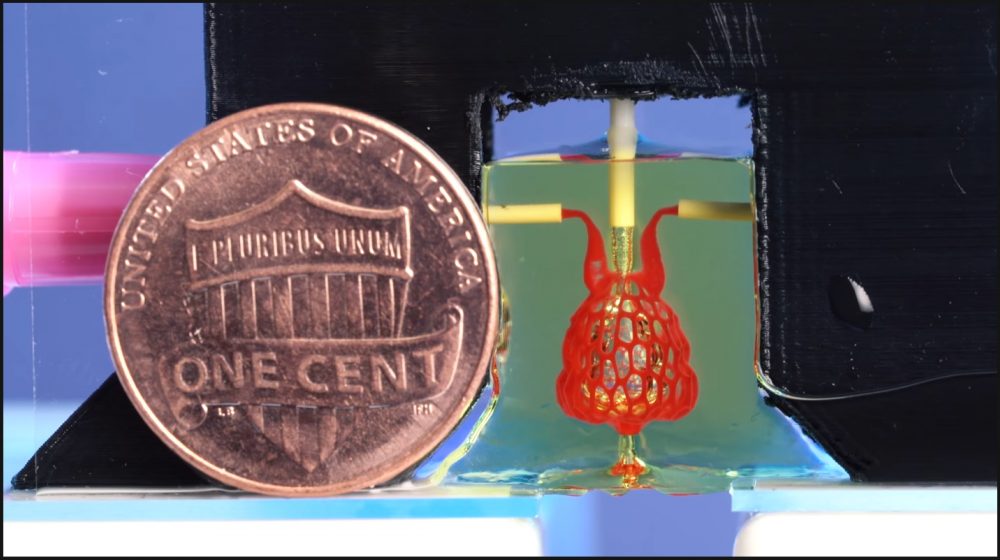Bioengineers Design 3D Printed Lung Which Mimics Its Human Counterpart

One of the major hurdles for scientists regarding the creation of human organs via 3D printing was the inability to print the complex vascular structure that can transfer nutrients to nearby tissues. Previously, a breakthrough was achieved in the form of a 3D printed heart, and as per recent reports, Bioengineers from the United States have overcome the aforementioned hurdle and have created a hydrogel model of a lung-mimicking air-pocket/sac, which has airways that can deliver oxygen to surrounding blood vessels.
 The team was led by bioengineers from Rice University and University of Washington. The 3D printed lung was designed in such a way that it could include independent vascular networks. The different vascular networks include airways, lung blood vessels, bile ducts and the blood vessels present inside the liver. Delivering oxygen to tissues surrounding the blood vessels was always a challenge, but the researchers claim that their bioprinting technology is the first one to beat the hurdle of multivascularization in an artificially designed organ.
The team was led by bioengineers from Rice University and University of Washington. The 3D printed lung was designed in such a way that it could include independent vascular networks. The different vascular networks include airways, lung blood vessels, bile ducts and the blood vessels present inside the liver. Delivering oxygen to tissues surrounding the blood vessels was always a challenge, but the researchers claim that their bioprinting technology is the first one to beat the hurdle of multivascularization in an artificially designed organ.
 An assistant professor at the University of Washington states that with the removal of such an obstacle from the path, multiple tissues can be designed which can breathe and function just like the healthy tissue in our bodies. Not just that, 3D printed organs will be able to behave more functionally than ever before. Bioprinting has gained a lot of traction in the past few years, solely because it could allow doctors to print replacement organs from a patient’s own cells, increasing chances of survival drastically.
An assistant professor at the University of Washington states that with the removal of such an obstacle from the path, multiple tissues can be designed which can breathe and function just like the healthy tissue in our bodies. Not just that, 3D printed organs will be able to behave more functionally than ever before. Bioprinting has gained a lot of traction in the past few years, solely because it could allow doctors to print replacement organs from a patient’s own cells, increasing chances of survival drastically.
 Also Read: An Unknown HTC Mid Range Smartphone Spotted On Geekbench
Also Read: An Unknown HTC Mid Range Smartphone Spotted On Geekbench
The bioengineers believe that a ready supply of such bioprinted organs can one day be rolled out in huge quantities, which could then be used to treat patients worldwide. Additionally, 2D slices of organs (as thin as 1-50 microns) will also be used to fabricate organs like the liver, which is especially complex to manufacture using just a 3D printer. It is specifically necessary to develop a bioprinted liver that can perform the same functions of a human liver. This is because unlike some other organs, no machine or therapy can entirely replace the functionality of the liver. Hopefully, in the not-so-distant future, 3D printers will be capable of printing a complete set of organs that can effectively replace human organ functionalities.






















